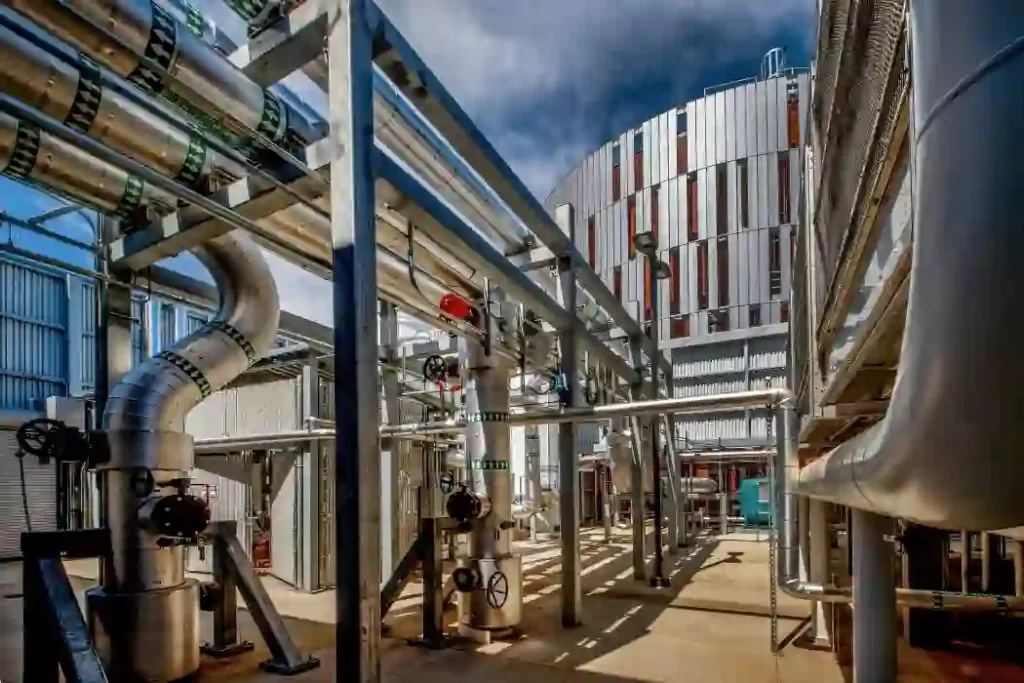When it comes to creating a comfortable indoor environment, HVAC systems play a crucial role. However, understanding the various terms associated with HVAC can be overwhelming for beginners. In this beginner’s guide, we will demystify HVAC terminology, explaining the key components of an HVAC system and introducing common HVAC terms. By the end of this article, you’ll have a solid foundation for understanding HVAC systems.
HVAC
Importance
An efficient HVAC system is essential for maintaining a comfortable and healthy living or working environment. It helps regulate temperature, control humidity, remove airborne pollutants, and ensure proper air circulation. Understanding HVAC terminology is crucial for homeowners and businesses looking to make informed decisions about their heating and cooling systems. Considering a home renovation? Don’t overlook the importance of HVAC upgrades to enhance comfort, energy efficiency, and indoor air quality.

Key Components of an HVAC System
To comprehend HVAC terminology fully, it’s essential to familiarize yourself with the key components of an HVAC system. Let’s explore them one by one:
Furnace
The furnace is responsible for heating the air in the winter. It burns fuel (such as gas, oil, or electricity) to generate heat, which is then distributed throughout the building using ductwork and vents.
Air Conditioner
The air conditioner is an integral part of an HVAC system, especially during hot summer months. It cools and dehumidifies the air, providing relief from high temperatures. Air conditioners work by extracting heat from the indoor air and expelling it outside.
Heat Pump
A heat pump is a versatile component that can both heat and cool indoor spaces. It transfers heat from one place to another, depending on the desired temperature. In winter, it extracts heat from the outside air and brings it inside. In summer, it removes heat from indoor air and releases it outside.
Thermostat
The thermostat acts as the control center of the HVAC system. It allows users to set and adjust the desired temperature, activating the heating or cooling components accordingly. Modern thermostats often come with programmable features for energy efficiency.
Ductwork
Ductwork refers to a system of ducts that distributes conditioned air throughout the building. It ensures proper airflow and even distribution of heated or cooled air to various rooms.
Vents
Vents are the outlets through which conditioned air enters the living or working spaces. They are strategically placed throughout the building to ensure adequate airflow and temperature control.
Common HVAC Terminology
To navigate the world of HVAC effectively, it’s important to understand common HVAC terms. Here are a few essential terms to know:
BTU
BTU stands for British Thermal Unit. It is a unit of measurement used to quantify the amount of heat required to raise the temperature of one pound of water by one degree Fahrenheit. BTUs are used to determine the heating or cooling capacity of an HVAC system.
SEER
SEER stands for Seasonal Energy Efficiency Ratio. It measures the cooling efficiency of an air conditioner or heat pump over an entire cooling season. The higher the SEER rating, the more energy-efficient the system.
AFUE
AFUE stands for Annual Fuel Utilization Efficiency. It measures the efficiency of a furnace or boiler in converting fuel into heat over a year. A higher AFUE rating indicates a more efficient heating system.
HVAC Load Calculation
HVAC load calculation is the process of determining the heating and cooling requirements for a space. It takes into account factors such as the size of the area, insulation, number of occupants, and climate conditions. A proper load calculation helps in selecting the right-sized HVAC system.
HVAC Maintenance
HVAC maintenance refers to the regular upkeep of the HVAC system to ensure its optimal performance. It involves activities such as filter replacement, cleaning, lubrication, and system inspections. Regular maintenance improves efficiency, extends the system’s lifespan, and prevents costly breakdowns.
Choosing the Right HVAC System
When selecting an HVAC system for your home or business, several factors should be considered:
Size and Capacity
Choosing the right-sized HVAC system is crucial for efficient operation. Undersized systems may struggle to meet the heating or cooling demands, while oversized systems can lead to energy wastage. Consulting with an HVAC professional can help determine the appropriate size and capacity for your specific needs.
Energy Efficiency
Energy-efficient HVAC systems help reduce energy consumption and lower utility bills. Look for systems with high SEER ratings and consider ENERGY STAR® certified products, which meet stringent energy efficiency standards.
Cost
Consider your budget and long-term cost savings when selecting an HVAC system. While higher efficiency systems may have a higher upfront cost, they can lead to significant savings in energy bills over time.
Conclusion
Understanding HVAC terminology is essential for anyone looking to make informed decisions about their heating and cooling systems. In this beginner’s guide, we covered the key components of an HVAC system and introduced common HVAC terms. By familiarizing yourself with these concepts, you’ll be better equipped to communicate with HVAC professionals and make choices that suit your comfort and efficiency needs.

